
Editor’s note: This guest blog, written by Karlee Pringle, a student occupational therapist in the School of Occupational Therapy at the University of Western University in Ontario, Canada, discusses tools (assistive devices) to help people with Parkinson’s more safely and easily prepare and enjoy meals.
How can assistive devices help individuals with Parkinson’s disease in the kitchen?
In the kitchen, motor symptoms of Parkinson’s such as slowed movement, involuntary movement (dyskinesia) and tremors can make cooking tasks more challenging and increase the risk for injury. Non-motor symptoms such as fatigue or memory and thinking changes (cognitive impairment) can also affect an individual's ability to concentrate, follow a recipe and tolerate longer prepping periods. Without proper support, these symptoms can make activities like cooking and eating less enjoyable. Assistive devices can help individuals with Parkinson’s be better equipped to complete activities in ways that are meaningful to them. For example, for someone with Parkinson’s who loves to cook and values their ability to do this independently, assistive devices can help them to maintain participation, improve confidence and promote safety.
Here, we highlight some of the many different products that individuals with Parkinson’s can use to make cooking, meal prepping, and eating easier and safer.
Kettle Tipper: An electric kettle heats water quickly for hot beverages and food items. When the water has boiled, the user must first lift the kettle, then pour the hot water into their dish. For individuals with reduced arm or hand strength, a kettle tipper can help prevent spills or burns. A kettle tipper is a wired or plastic frame that holds and pivots your kettle. Rather than having to lift the kettle itself, users can tip the kettle in its frame to pour hot water into their bowl or cup.
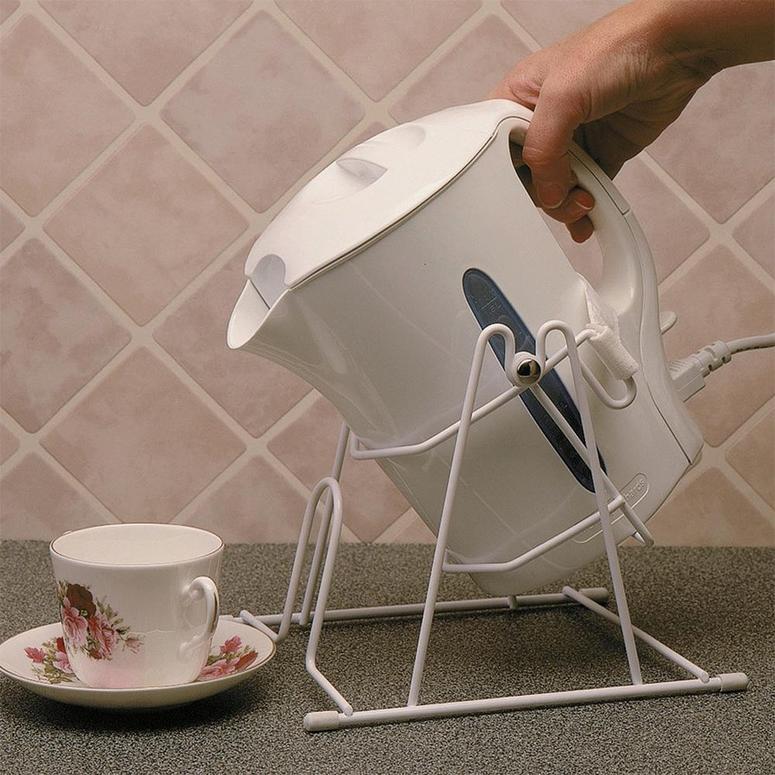
Jar and bottle opener: This tool offers four different-sized openings that can be placed on bottle and jar lids to open and close them easily. The rubber lip on the inside of the device grips the lids, allowing individuals with reduced strength or range of motion to open items independently.
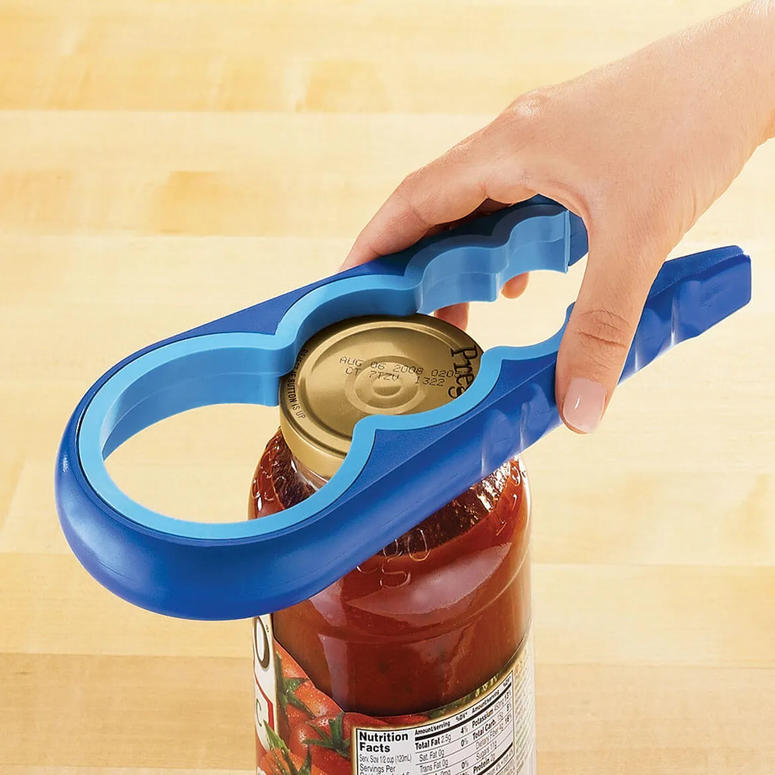
Dycem mat: Dycem mats are made of a non-slip material that grips and stabilizes objects to a surface below. These mats can be put under plates, mixing bowls or cutting boards to prevent them from moving. This can be helpful for individuals who struggle with stabilizing objects when completing tasks with two hands.
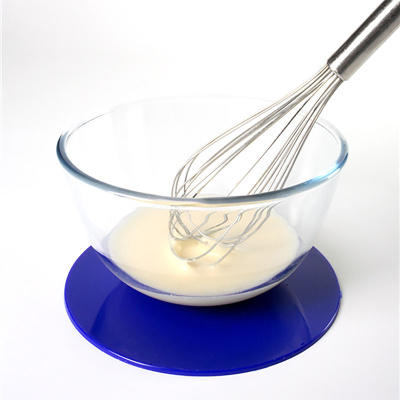
Adaptive cutting board: Adaptive cutting boards come with food spikes, raised edge guards and suction feet that support one-handed or modified methods of cutting. The stainless-steel or aluminum food spikes keep food items in place while slicing, peeling or cutting. The raised edge guards are used as a barrier to prevent food from falling off the board while cutting. The suction feet allow for improved stability of the board, decreasing the risk of accidents.
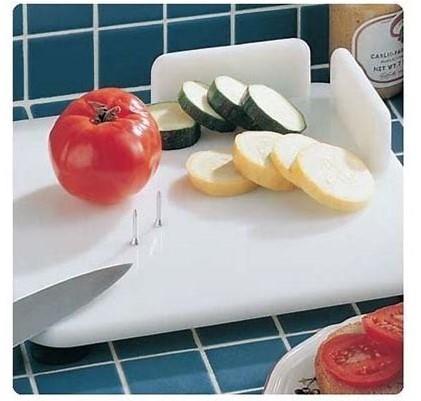
Rocker knife: A rocker knife has a rounded blade with a handle on the top that allows for easier grasp and control. While traditional cutlery requires the use of both hands to stabilize and cut food items, the rocker knife only requires one hand, and it cuts precisely with less strength and coordination. These knives can cut all types of food and may be especially useful for people with limited hand control and coordination.
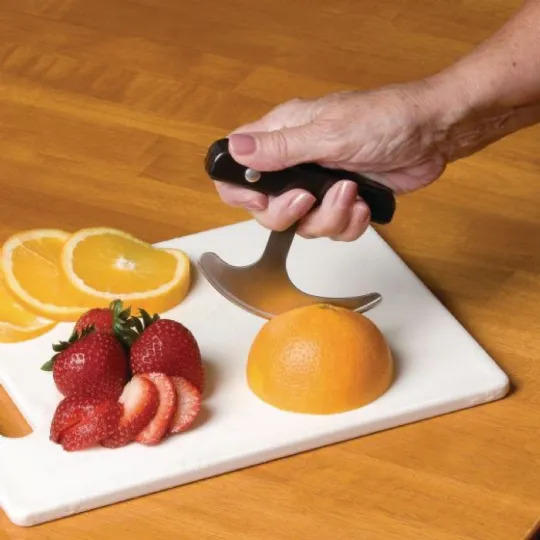
Plate guard and scoop plates: Plate guards are plastic or stainless-steel attachments that are added to dishware to support the scooping of food. The guard attaches to the edge of a dish, allowing the individual to use it as a barrier to push against, then scoop. Scoop plates and bowls, on the other hand, come with built-in high rims that facilitate the scooping of food items.
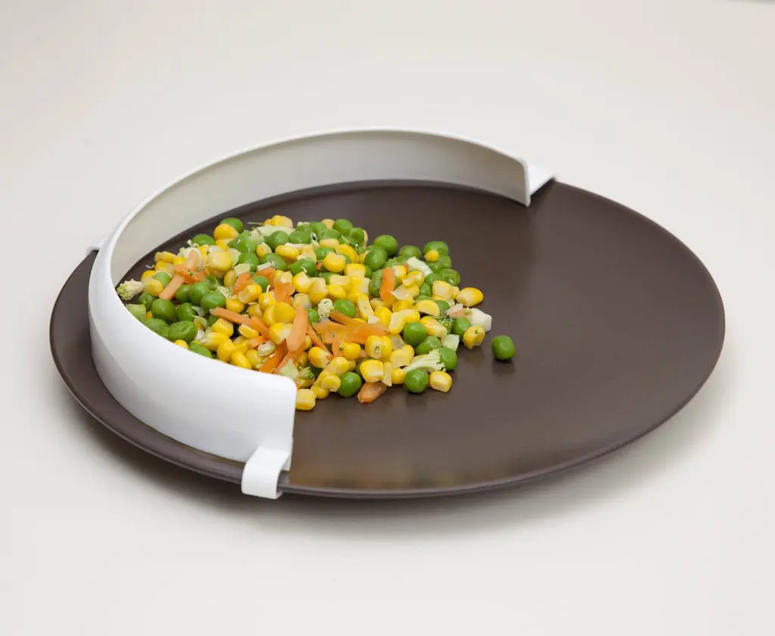
Adaptive utensils: Many different types of adaptive utensils have been developed, including weighted utensils, built-up handle utensils and swivel utensils. Weighted utensils are utensils that weigh approximately one-half pound and are used to help counteract and stabilize tremors. Built-up handle utensils have long and wide handles that support easier grasp when an individual has difficulties with grip or hand and finger control. Swivel utensils utilize a compensatory swiveling mechanism that keeps the utensil level during tremors to prevent spills. Depending on the individual’s specific needs, a combination of these utensil features can also be utilized.
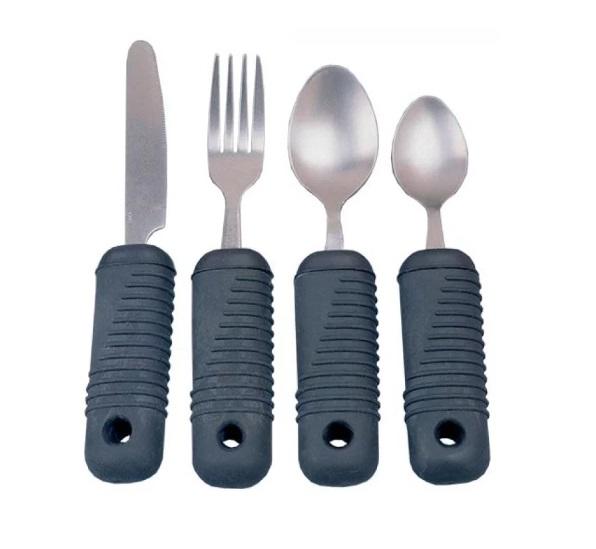
How can you find these devices?
The devices discussed above can be found and purchased in online retail stores as well as medical supply stores. When selecting an assistive device, there are many different considerations, such as cost, availability and general satisfaction when using the device. It is highly recommended that you reach out to an occupational therapist who can assess your current abilities and match you with the best device. To learn more about occupational therapy and find a therapist in your area, read MJFF’s blog.
For more tips and information about easier and healthier eating and cooking when you live with Parkinson’s, download MJFF’s free guide and watch a webinar.
*NOTE: The medical information contained in this article is for general information purposes only. The Michael J. Fox Foundation has a policy of refraining from advocating, endorsing or promoting any tool or device, drug therapy, course of treatment, or specific company or institution. It is crucial that care and treatment decisions related to Parkinson’s disease and any other medical condition be made in consultation with a physician or other qualified medical professional.
References
- Jug Kettle Tipper [Online image]. (n.d.). Essential Aids. https://www.essentialaids.com/jug-kettle-tipper.html
- Easy Twist Jar Opener [Online image]. (n.d.). Easy Comforts. https://www.easycomforts.com/buy-easy-twist-jar-opener-317553
- Dycem Mat [Online image]. (n.d.). Stockx Medical. https://www.stockxmedical.com/en/dycem-mat-19-centimeters-around.html
- Ergonomic T-Shape Rocker Knife [Online image]. (n.d.). Rehabmart. https://www.rehabmart.com/product/rocker-knife-46650.html
- Plate Guard [Online image]. (n.d.). Felgains. https://www.felgains.com/care-products/plate-guard/
- Weighted Utensils [Online image]. (n.d.). Performance Health. https://www.performancehealth.ca/sure-grip-weighted-utensils